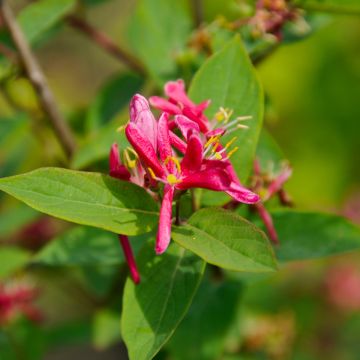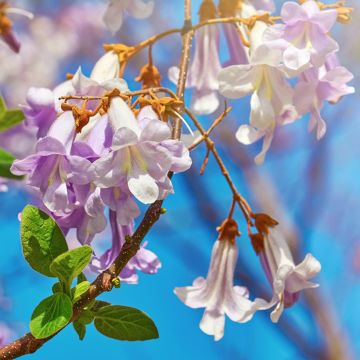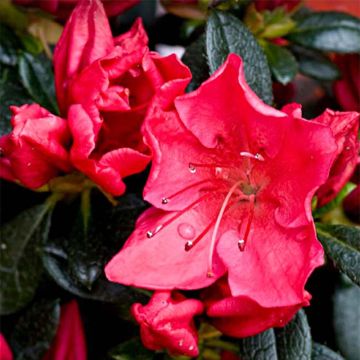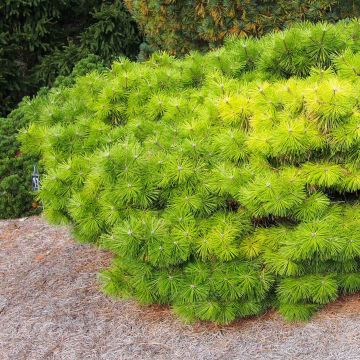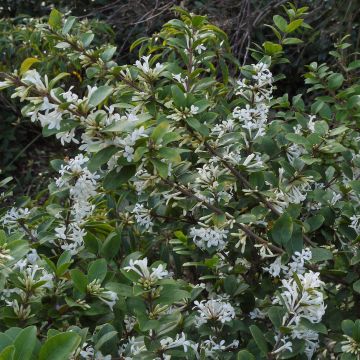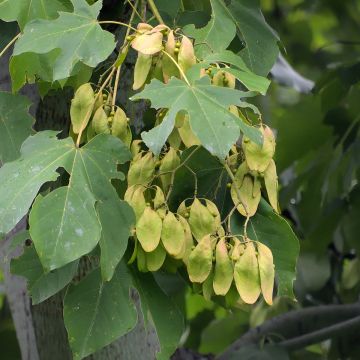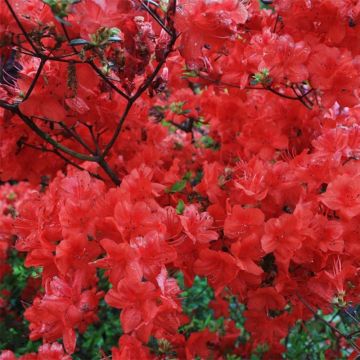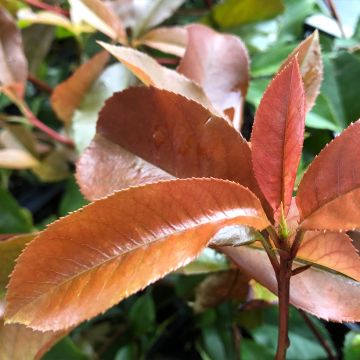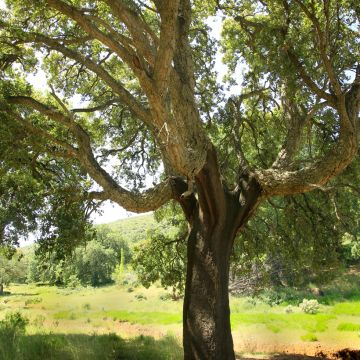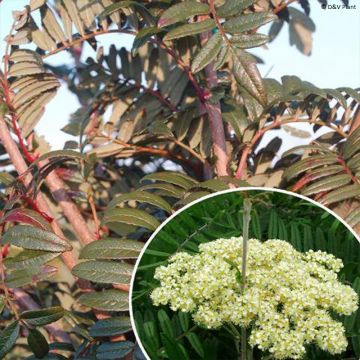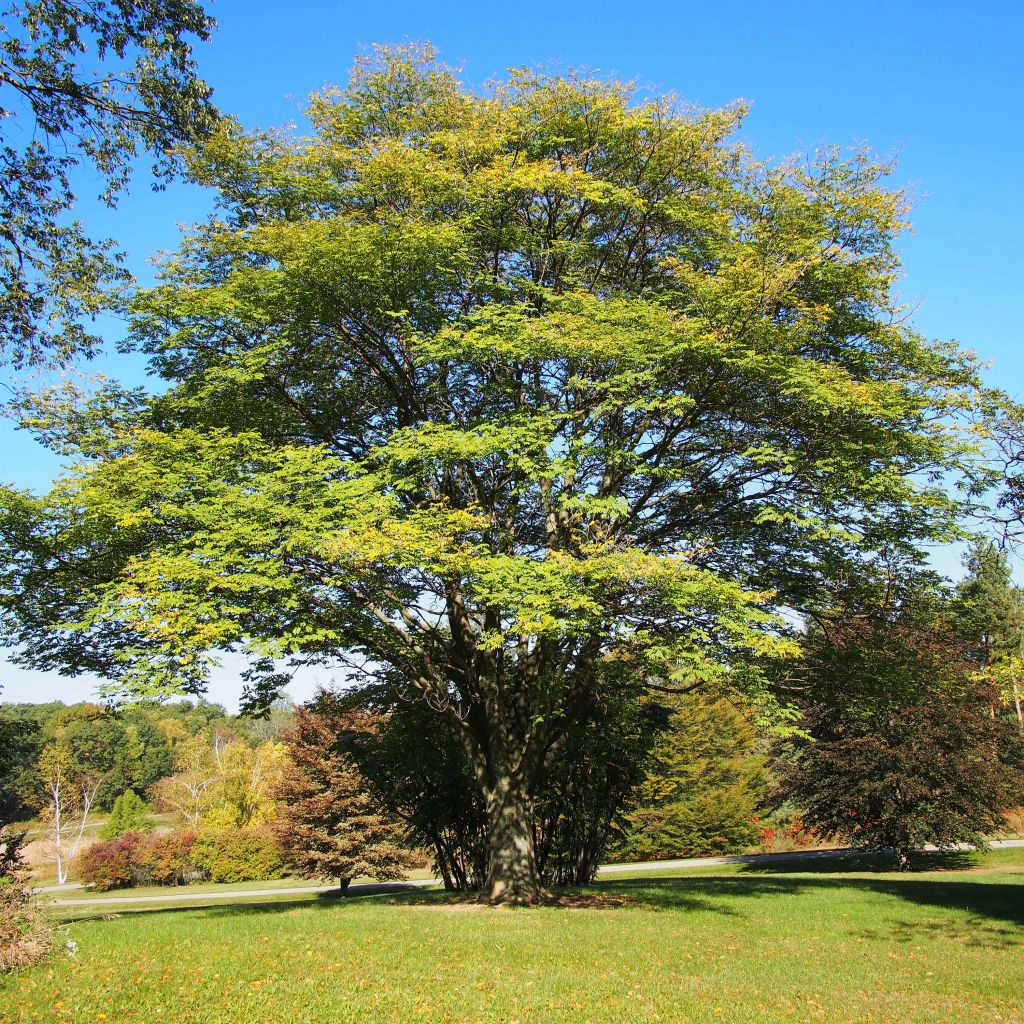

Maackia amurensis - Maackia du fleuve Amour.
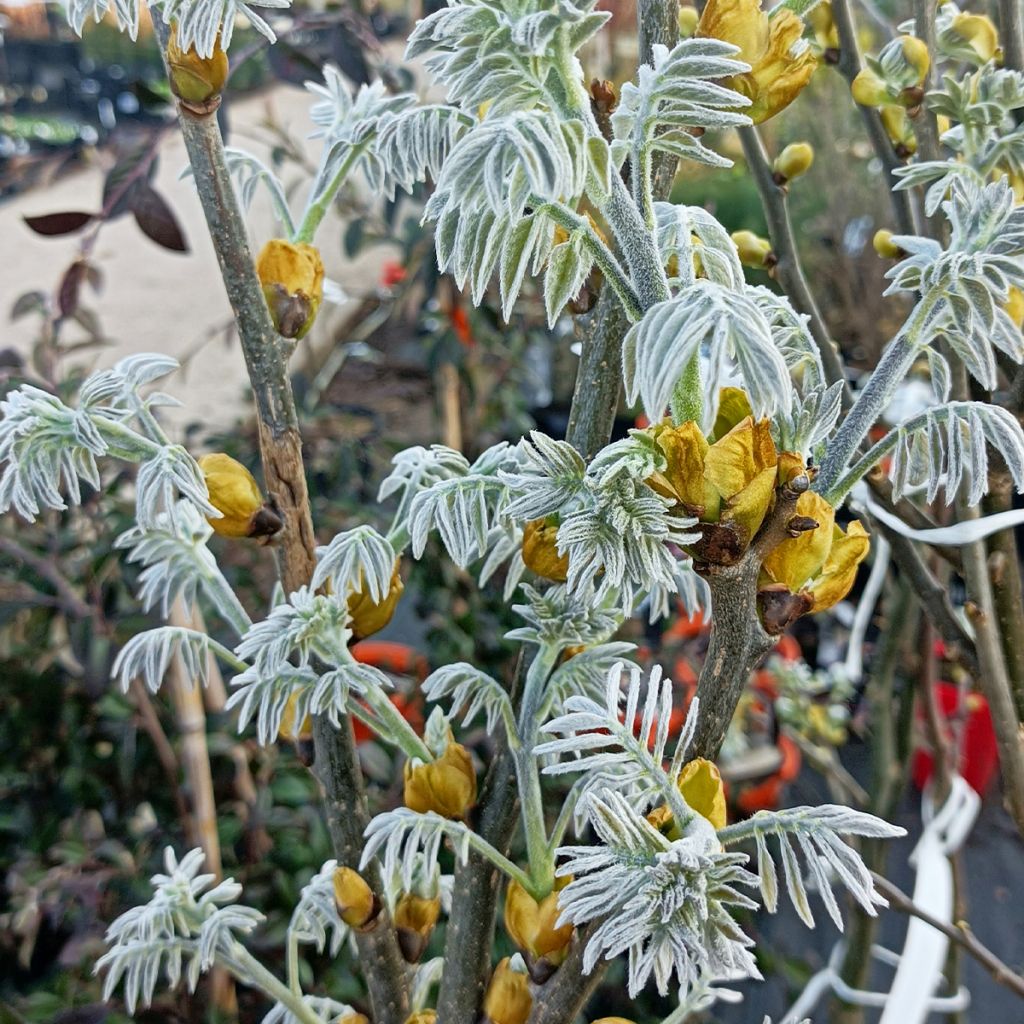

Maackia amurensis
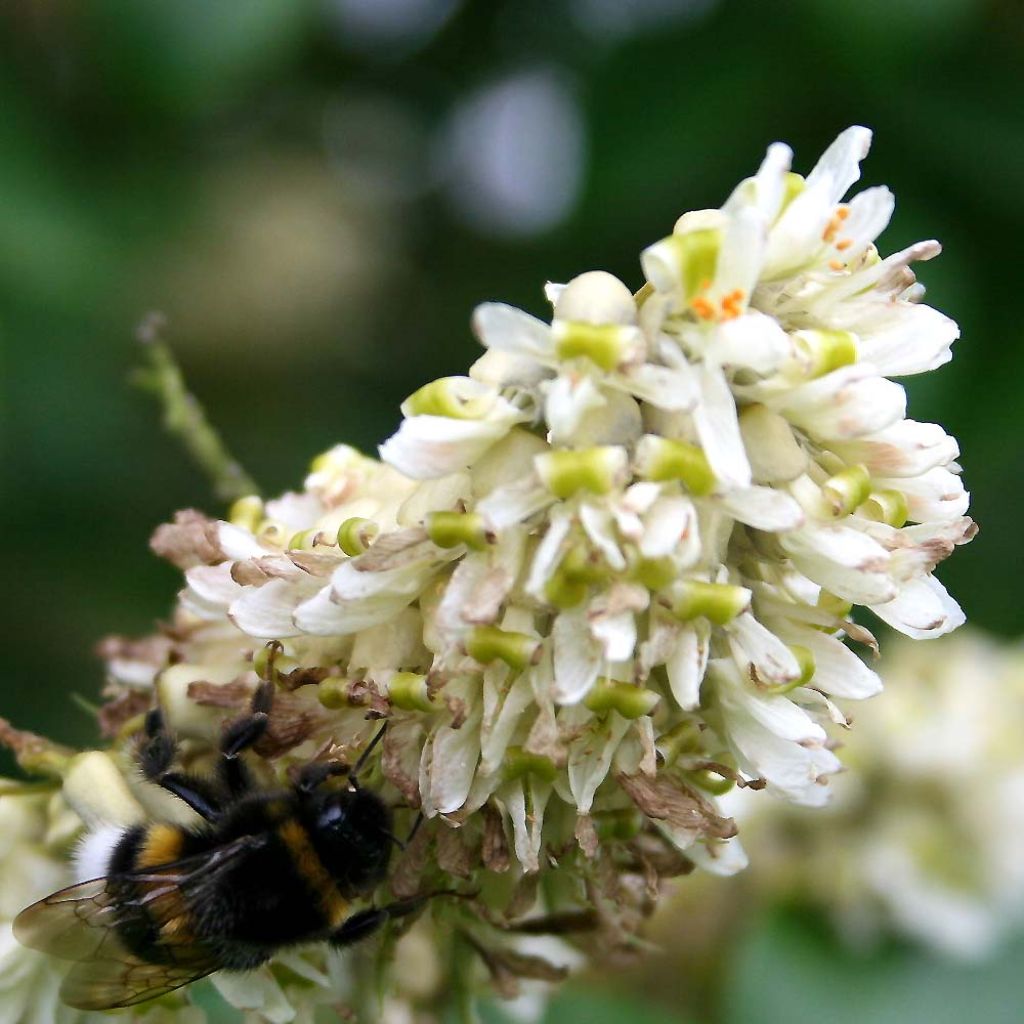

Maackia amurensis - Maackia du fleuve Amour.
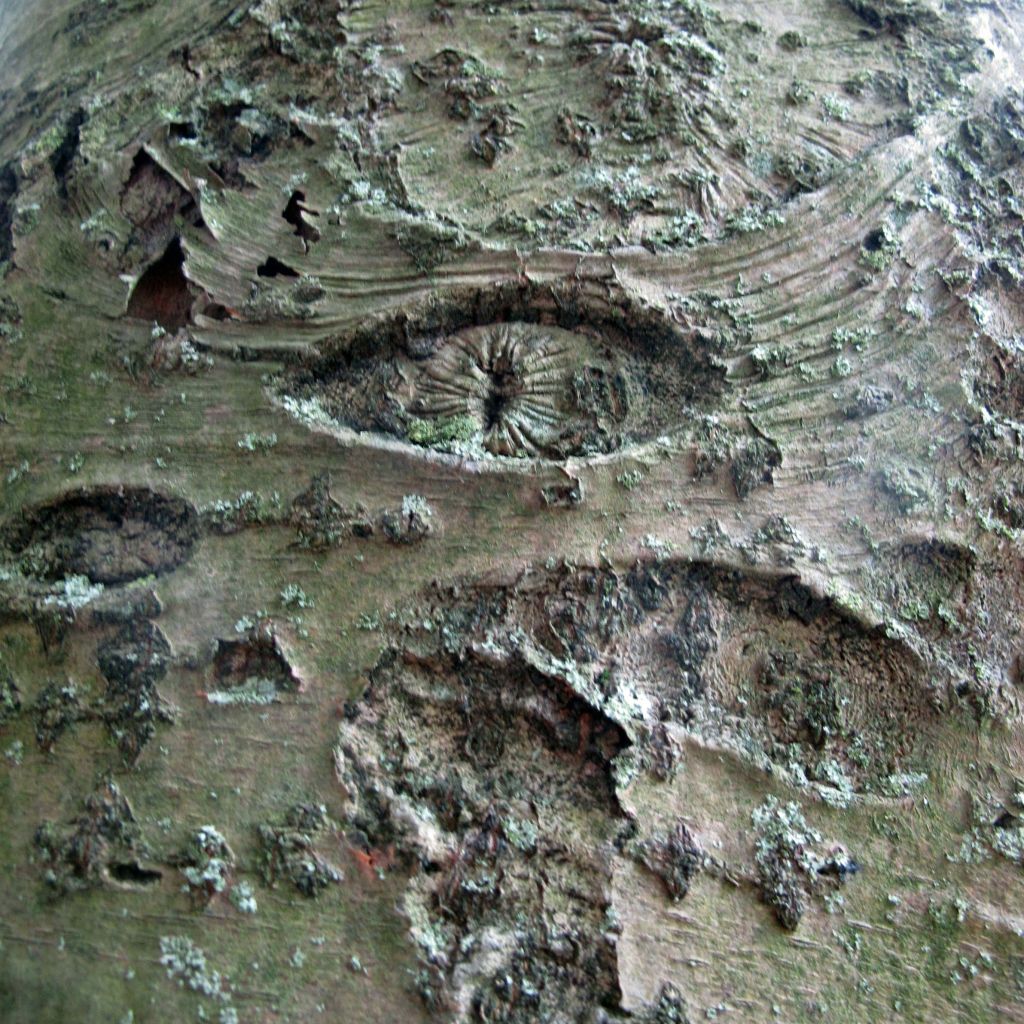

Maackia amurensis - Maackia du fleuve Amour.
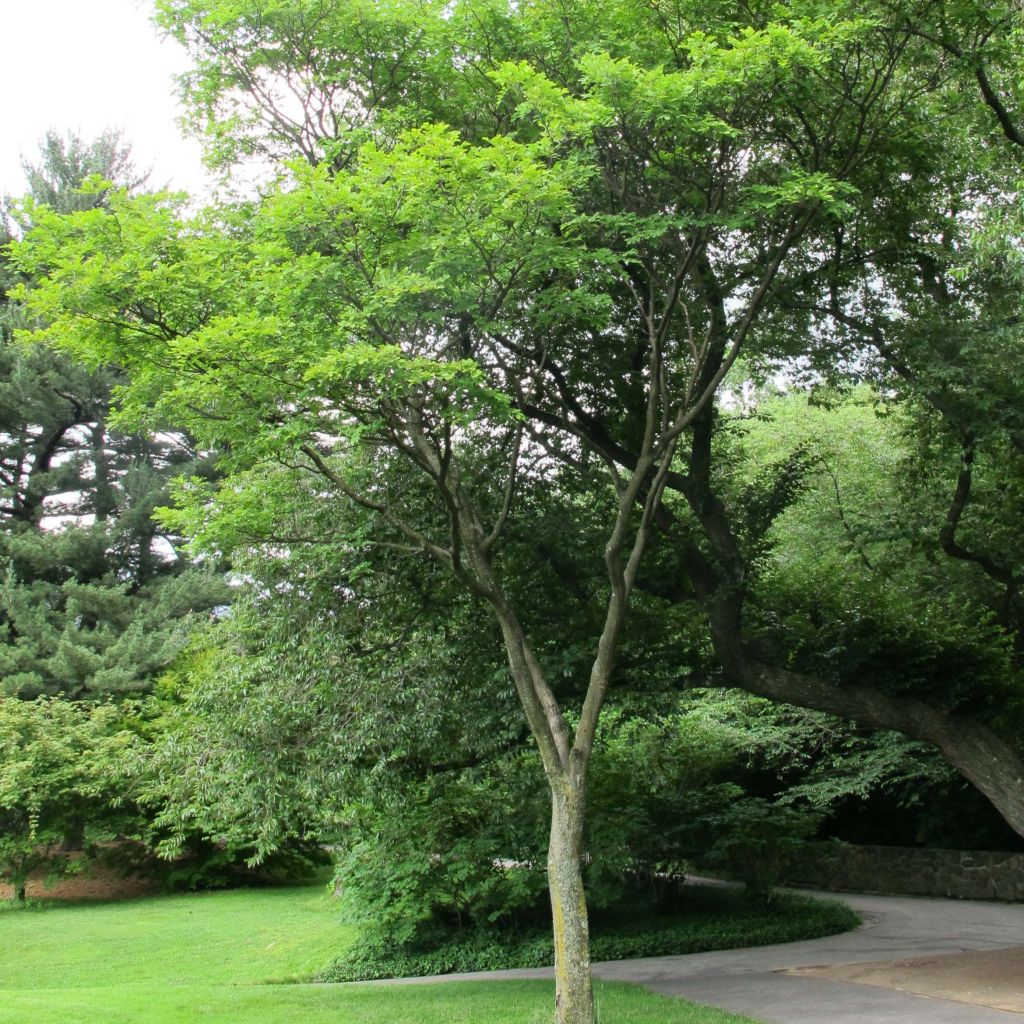

Maackia amurensis - Maackia du fleuve Amour.
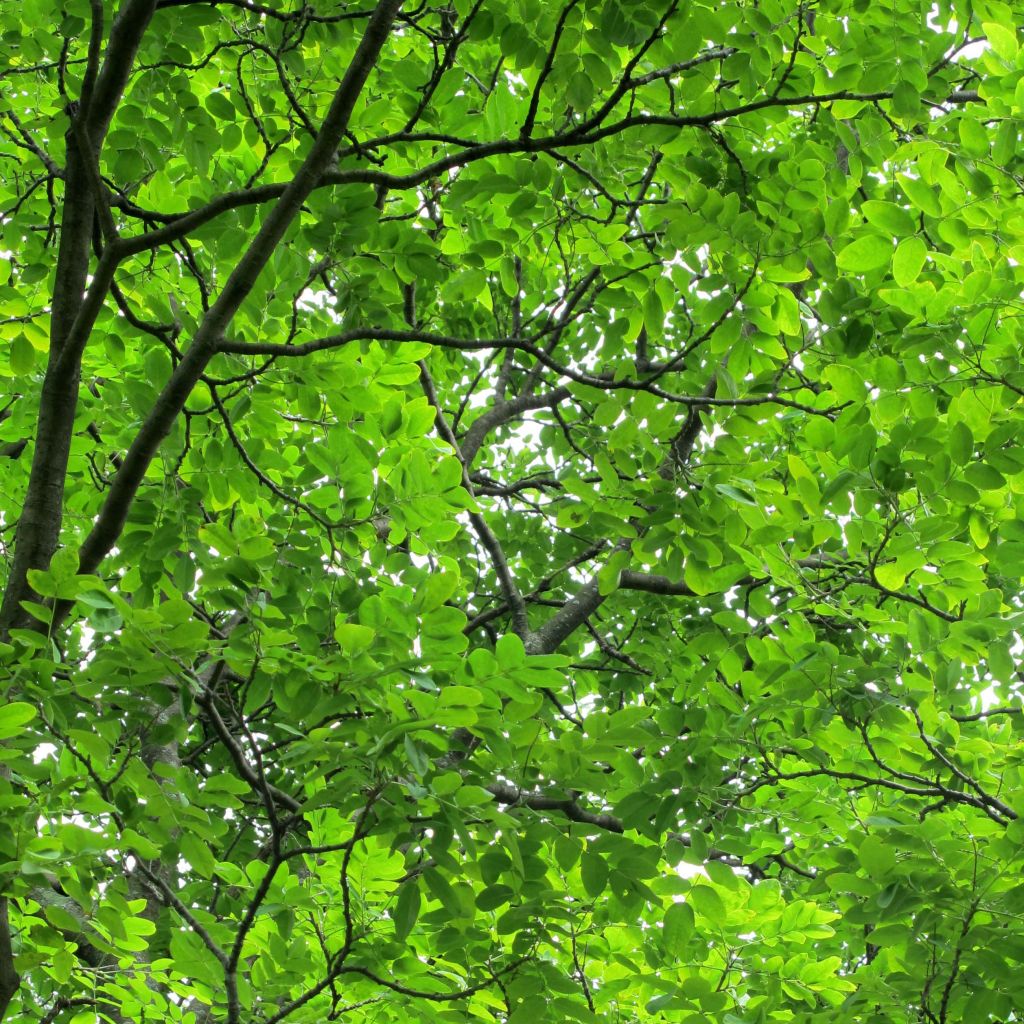

Maackia amurensis - Maackia du fleuve Amour.
Maackia amurensis
Maackia amurensis
Amur Maackia
This item cannot be shipped to the selected country
Oversize package delivery charge from €6.90
More information
Schedule delivery date,
and select date in basket
This plant carries a 24 months recovery warranty
More information
We guarantee the quality of our plants for a full growing cycle, and will replace at our expense any plant that fails to recover under normal climatic and planting conditions.
Oversize package: home delivery by special carrier from €6.90 per order..
Express home delivery from €8.90.
Does this plant fit my garden?
Set up your Plantfit profile →
Description
Maackia amurensis, also known as Amur Maackia, is one of those small trees that are perfectly hardy and easy to grow, but not well-known to gardeners. This relative of Laburnum, Albizzia, and Sophora is interesting for its excellent hardiness, with a wide and dense crown that gives it a beautiful presence in the garden, and the superb silver colour of its young shoots. These shoots are as decorative as its white and honey-scented summer blooms, which form clusters of numerous leguminous flowers. It is undemanding and tolerant of various soil conditions, and according to some American sources, it is tolerant of summer drought.
The Amur Maackia is one of the eight species of deciduous shrubs and trees that make up this genus in the family of legumes, originating from China and the Far East. Siberia, Manchuria, Japan, and Korea are the birthplaces of this small tree, which enjoys sunshine and the proximity to water. It is capable of synthesizing nitrogen at its roots, like many plants in its family. The growth of this shrub is rather slow, depending on the growing conditions. Maackia develops one or several short trunks that branch out into several main branches at a height of 70-80 cm (27.6-31.5 in) from the ground. The crown is rounded, open and spreading, taking on an umbrella-like shape over the years. Eventually, the tree will reach a height of about 10 m (32 ft 10 in) with a spread of 12 m (39 ft 5 in). The shiny bark is brown, sometimes tinged with bronze-copper, and is slightly peeling on older plants. The young branches are covered in short hairs and then become smooth and scattered with prominent raised pores over time.
The young shoots of this tree are covered with bristles, which are particularly decorative and resemble frost. They unfold into young leaves with a silvery underside. The mature foliage consists of pinnate leaves, 20 to 30 cm (7.9 to 11.8 in) long, divided into 7 to 11 leaflets, with a grey-green to bright olive green colour under the sun. The autumn foliage is brown.
Flowering takes place from June to August, depending on the climate, and can vary in abundance from year to year. The small but numerous leguminous flowers are arranged in upright clusters, 10 to 15 cm (3.9 to 5.9 in) in height. They are white to very pale yellow, slightly fragrant, nectar-rich, and attractive to bees. They are followed by the formation of flat and elongated pods, 3 to 6 cm (1.2 to 2.4 in) long, which turn from green to brown and contain kidney-shaped seeds.
In the garden, the Amur Maackia is an excellent small shade tree, with a neat, open appearance that allows sunlight to pass through it in winter. It can be placed near a patio or at the entrance of the garden. While it may be less spectacular than the Albizzia, it is much hardier, making it suitable for planting in many regions, even in poor soil. Plant it as a specimen tree or in front of a shrub border, for example with Tamaris tetrandra, Callistemon viminalis, or Chilopsis linearis, which thrive in similar conditions. It can also be accompanied by Gleditsia Sunburst, Schinus molle (in mild climates), Salix exigua, or other shrubs or small trees with light foliage and subtly exotic appearance that will not overshadow its subtle charm.
Report an error about the product description
Maackia amurensis in pictures
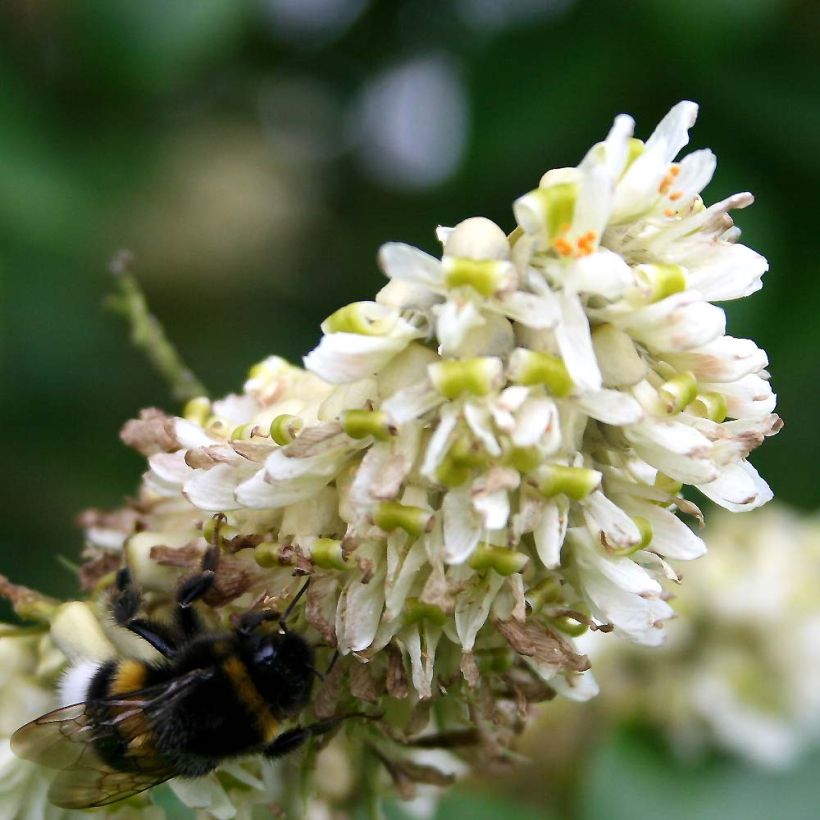

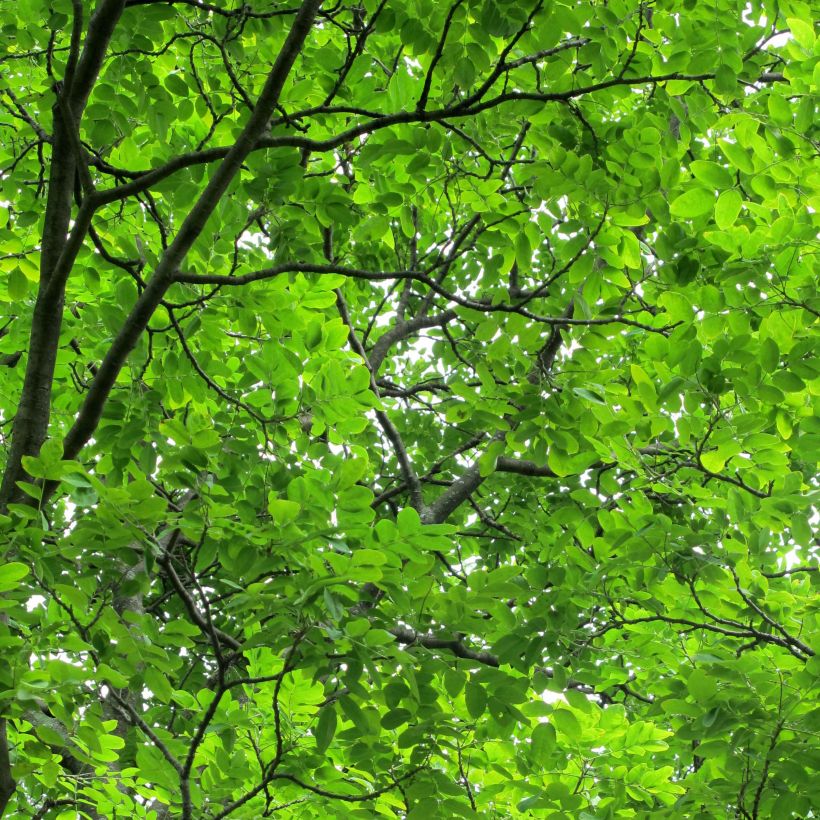

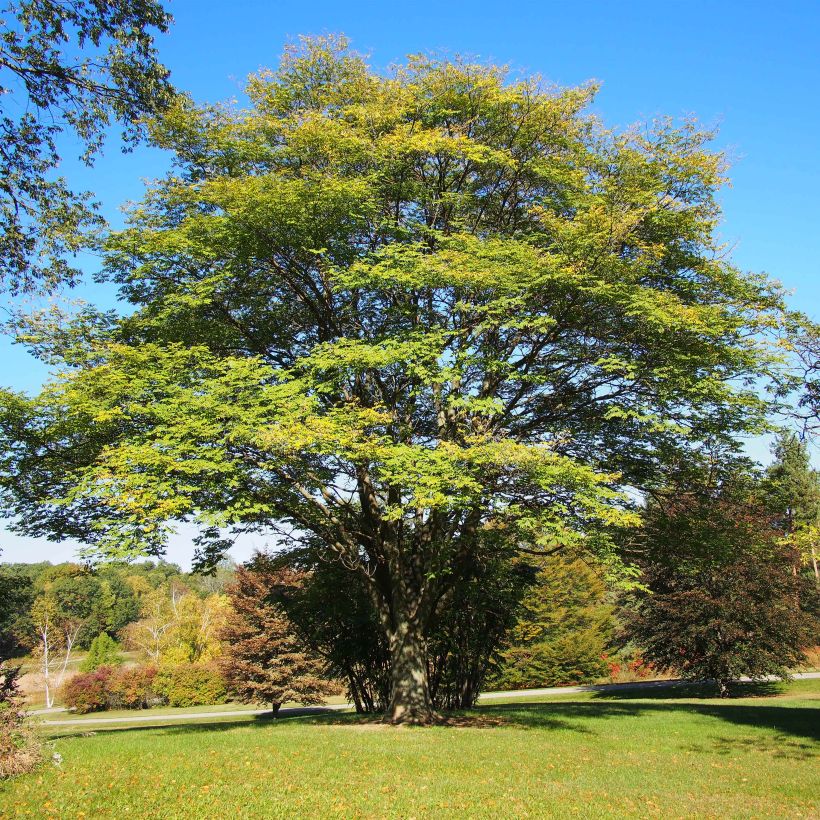

Plant habit
Flowering
Foliage
Botanical data
Maackia
amurensis
Fabaceae
Amur Maackia
East Asia
Other Shrubs A to Z
Planting and care
Plant Maackia amurensis in light, well-drained soil; preferably slightly acidic, loamy-sandy or humus-rich. that is not too dry at depth, even though it seems to tolerate summer drought once established. Highly adaptable, it thrives in both poor and occasionally dry soil as well as in cool, humus-rich and well-cultivated soil, however, its roots do not appreciate waterlogged soil. Avoid excessive exposure to wind that can break branches. This large bush will thrive in the sun, even in scorching exposure. Its hardiness is excellent. You can practice training this plant by removing low branches after flowering, but only on young plants. Large branches heal very poorly. Avoid moving this small tree, as transplanting this family of plants (Fabaceae) with deep root systems is often difficult.
Planting period
Intended location
Care
This item has not been reviewed yet - be the first to leave a review about it.
Haven't found what you were looking for?
Hardiness is the lowest winter temperature a plant can endure without suffering serious damage or even dying. However, hardiness is affected by location (a sheltered area, such as a patio), protection (winter cover) and soil type (hardiness is improved by well-drained soil).

Photo Sharing Terms & Conditions
In order to encourage gardeners to interact and share their experiences, Promesse de fleurs offers various media enabling content to be uploaded onto its Site - in particular via the ‘Photo sharing’ module.
The User agrees to refrain from:
- Posting any content that is illegal, prejudicial, insulting, racist, inciteful to hatred, revisionist, contrary to public decency, that infringes on privacy or on the privacy rights of third parties, in particular the publicity rights of persons and goods, intellectual property rights, or the right to privacy.
- Submitting content on behalf of a third party;
- Impersonate the identity of a third party and/or publish any personal information about a third party;
In general, the User undertakes to refrain from any unethical behaviour.
All Content (in particular text, comments, files, images, photos, videos, creative works, etc.), which may be subject to property or intellectual property rights, image or other private rights, shall remain the property of the User, subject to the limited rights granted by the terms of the licence granted by Promesse de fleurs as stated below. Users are at liberty to publish or not to publish such Content on the Site, notably via the ‘Photo Sharing’ facility, and accept that this Content shall be made public and freely accessible, notably on the Internet.
Users further acknowledge, undertake to have ,and guarantee that they hold all necessary rights and permissions to publish such material on the Site, in particular with regard to the legislation in force pertaining to any privacy, property, intellectual property, image, or contractual rights, or rights of any other nature. By publishing such Content on the Site, Users acknowledge accepting full liability as publishers of the Content within the meaning of the law, and grant Promesse de fleurs, free of charge, an inclusive, worldwide licence for the said Content for the entire duration of its publication, including all reproduction, representation, up/downloading, displaying, performing, transmission, and storage rights.
Users also grant permission for their name to be linked to the Content and accept that this link may not always be made available.
By engaging in posting material, Users consent to their Content becoming automatically accessible on the Internet, in particular on other sites and/or blogs and/or web pages of the Promesse de fleurs site, including in particular social pages and the Promesse de fleurs catalogue.
Users may secure the removal of entrusted content free of charge by issuing a simple request via our contact form.
The flowering period indicated on our website applies to countries and regions located in USDA zone 8 (France, the United Kingdom, Ireland, the Netherlands, etc.)
It will vary according to where you live:
- In zones 9 to 10 (Italy, Spain, Greece, etc.), flowering will occur about 2 to 4 weeks earlier.
- In zones 6 to 7 (Germany, Poland, Slovenia, and lower mountainous regions), flowering will be delayed by 2 to 3 weeks.
- In zone 5 (Central Europe, Scandinavia), blooming will be delayed by 3 to 5 weeks.
In temperate climates, pruning of spring-flowering shrubs (forsythia, spireas, etc.) should be done just after flowering.
Pruning of summer-flowering shrubs (Indian Lilac, Perovskia, etc.) can be done in winter or spring.
In cold regions as well as with frost-sensitive plants, avoid pruning too early when severe frosts may still occur.
The planting period indicated on our website applies to countries and regions located in USDA zone 8 (France, United Kingdom, Ireland, Netherlands).
It will vary according to where you live:
- In Mediterranean zones (Marseille, Madrid, Milan, etc.), autumn and winter are the best planting periods.
- In continental zones (Strasbourg, Munich, Vienna, etc.), delay planting by 2 to 3 weeks in spring and bring it forward by 2 to 4 weeks in autumn.
- In mountainous regions (the Alps, Pyrenees, Carpathians, etc.), it is best to plant in late spring (May-June) or late summer (August-September).
The harvesting period indicated on our website applies to countries and regions in USDA zone 8 (France, England, Ireland, the Netherlands).
In colder areas (Scandinavia, Poland, Austria...) fruit and vegetable harvests are likely to be delayed by 3-4 weeks.
In warmer areas (Italy, Spain, Greece, etc.), harvesting will probably take place earlier, depending on weather conditions.
The sowing periods indicated on our website apply to countries and regions within USDA Zone 8 (France, UK, Ireland, Netherlands).
In colder areas (Scandinavia, Poland, Austria...), delay any outdoor sowing by 3-4 weeks, or sow under glass.
In warmer climes (Italy, Spain, Greece, etc.), bring outdoor sowing forward by a few weeks.

































